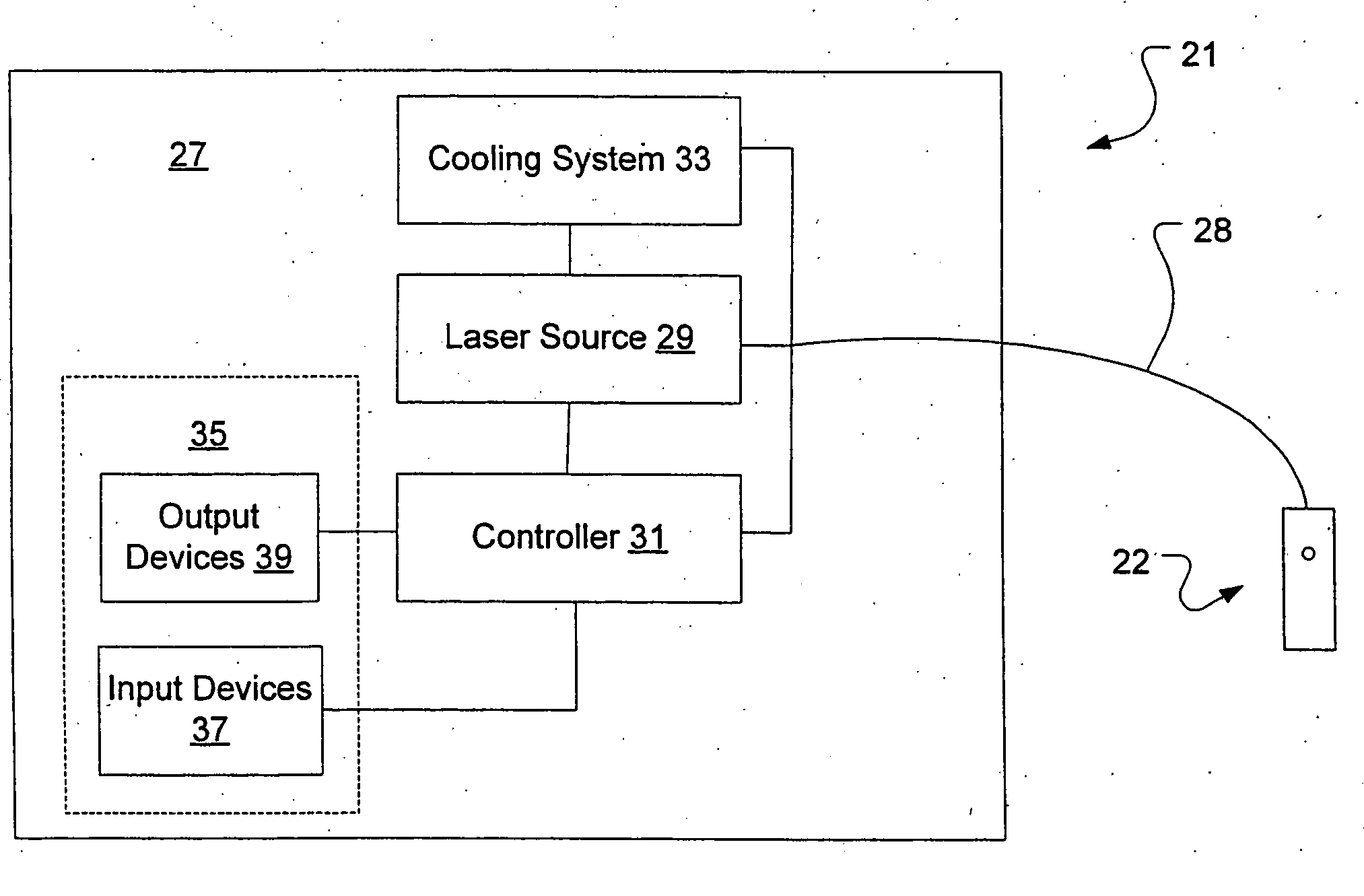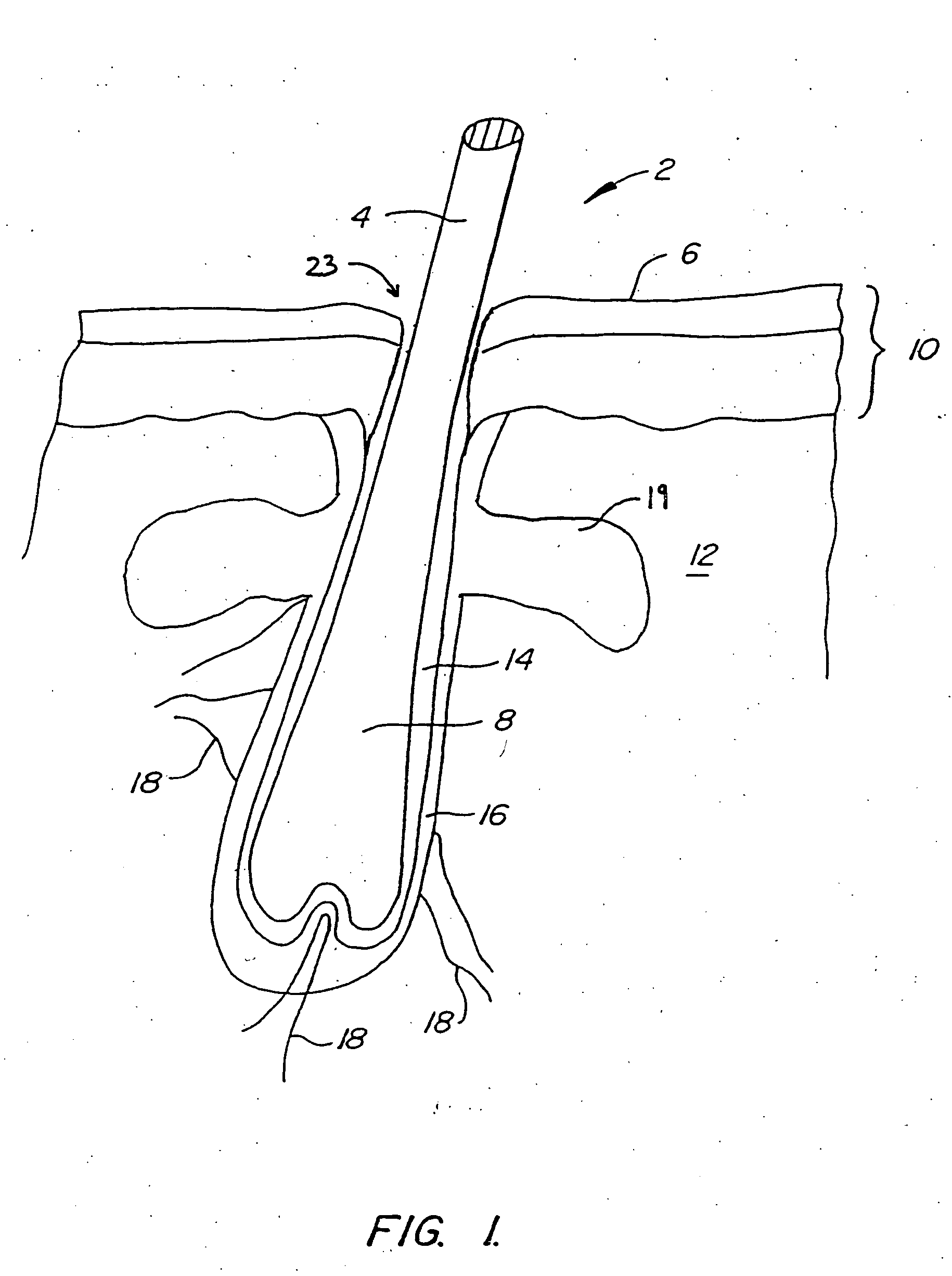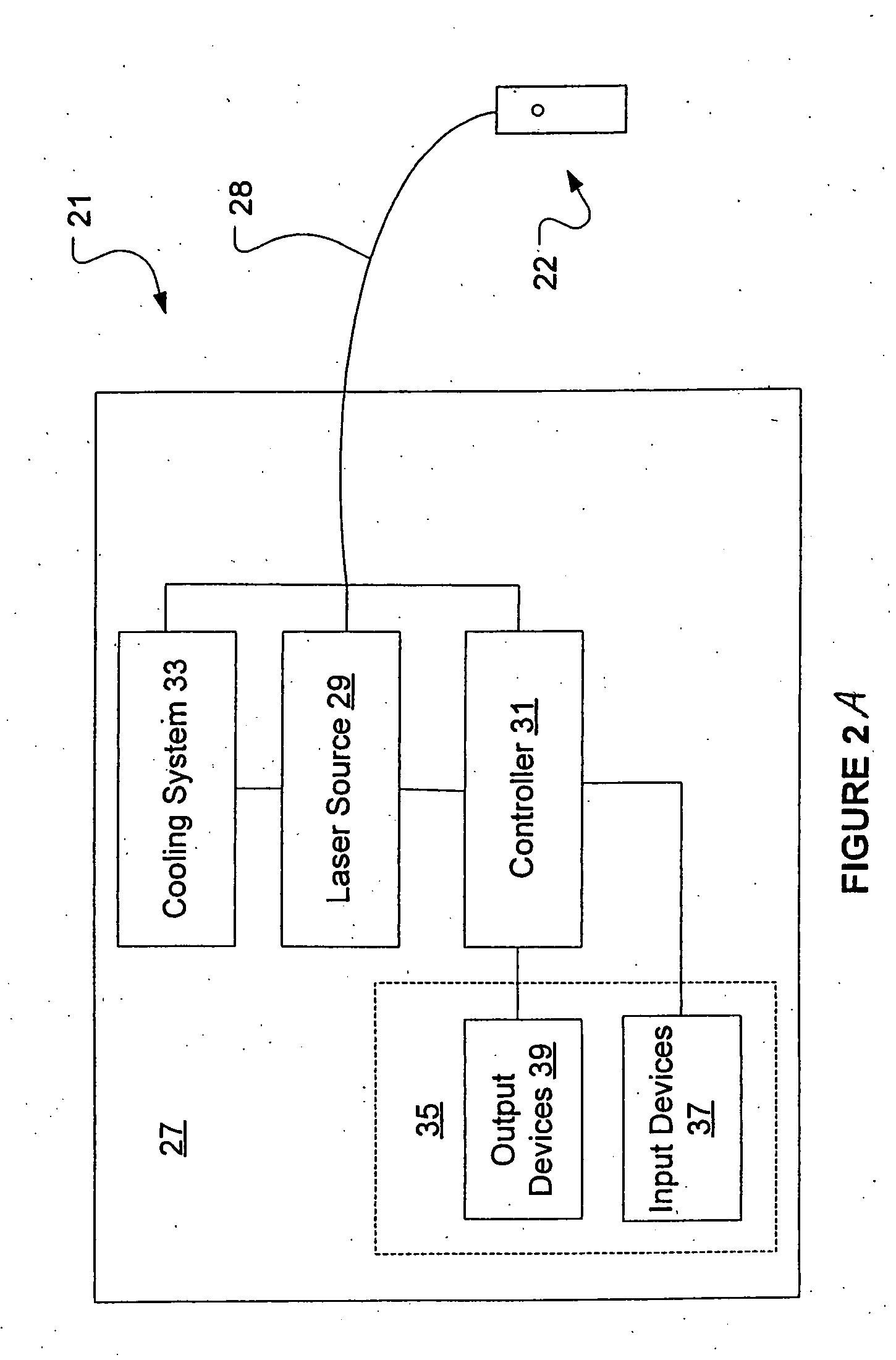Methods and devices for non-ablative laser treatment of dermatologic conditions
a non-ablative laser and dermatologic technology, applied in the field of non-ablative laser treatment of dermatologic conditions, can solve the problems that none of the conventional therapies have been completely successful in treating acne vulgaris, and achieve the effects of short pulse operation, short amount of time, and large amount of energy delivered into the tissu
- Summary
- Abstract
- Description
- Claims
- Application Information
AI Technical Summary
Benefits of technology
Problems solved by technology
Method used
Image
Examples
Embodiment Construction
[0047] The present invention provides non-ablative laser treatments of dermatologic conditions. The systems and methods rely on phototherapy at specific ultraviolet (UV) to near infrared (IR) wavelengths of non-coherent light to carry out the treatments. Examples include the treatment of wrinkles, hair removal or reduction, leg vein treatment, facial vein treatment, improvement of skin texture, decrease of pore size, reduction of rosacea, “blush” / diffuse redness, striae, scarring, and the like. As can be appreciated, the apparatus and methods described herein are applicable in dermatologic and other directly accessible tissues, for example any exposed tissue.
[0048] For ease of reference, the remaining discussion focuses on the treatment of the sebaceous gland for purposes of treating acne. Those of ordinary skill should recognize that the systems and methods of the present invention are equally applicable to other non-ablative treatments of other target tissue in the skin that are ...
PUM
 Login to View More
Login to View More Abstract
Description
Claims
Application Information
 Login to View More
Login to View More - R&D
- Intellectual Property
- Life Sciences
- Materials
- Tech Scout
- Unparalleled Data Quality
- Higher Quality Content
- 60% Fewer Hallucinations
Browse by: Latest US Patents, China's latest patents, Technical Efficacy Thesaurus, Application Domain, Technology Topic, Popular Technical Reports.
© 2025 PatSnap. All rights reserved.Legal|Privacy policy|Modern Slavery Act Transparency Statement|Sitemap|About US| Contact US: help@patsnap.com



